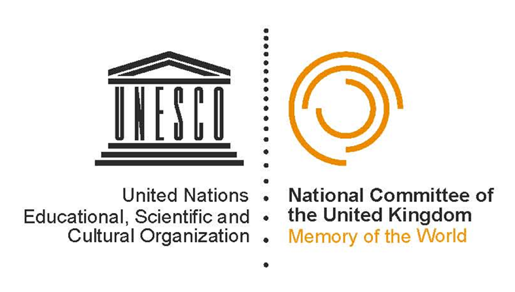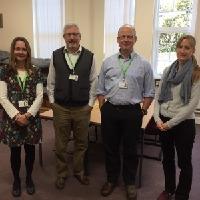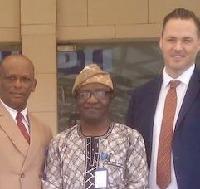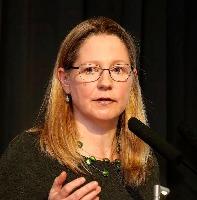DPC
Can Digital Preservation become business-as-usual?
Jonathan Tilbury is CTO and Founder of Preservica based in the UK
Digital Preservation has come a long way since the initial research activities resulted in cornerstone tools such as PRONOM, DROID, and JHOVE and the creation of the familiar OAIS reference model. The evolution of this change can be seen in the Digital Preservation Coalition itself, charting its creation, the growth in membership numbers, and the gradual move away from pure cultural heritage and academic organisations to the incorporation of different types of organisations. I’ve been there since these early days and am very excited about where the sector is headed.
Products have emerged to reflect this change. You can now choose between open source community tools and investment backed escrowed systems. These have a common core of functionality covering all the OAIS functions and growing sophistication to reflect their communities. They are supported by companies dotted around the world employing specialists in their sector. Choosing between these products depends on where your emphasis is, which functions you value most, the skill level of your team and a look at the total cost of ownership.
Consortium working - a collaborative approach to digital preservation
Sam Johnston is the County Archivist at Dorset History Centre
I think I'm stating what's known colloquially as the 'bleedin' obvious' when I say that digital preservation has presented a raft of challenges for small to medium sized archive services, most of which have undergone significant budget reductions in recent times. It's an area of work that is outside the skill-set and certainly the comfort zone of many, and in budgetary terms, it represents something that is likely to require additional funding, often very hard to secure. Therefore, a technical challenge combined with a relatively glum financial picture has meant that it has been difficult to understand how small services can begin to grapple with digital preservation. One thing I think we all acknowledge is the importance of digital preservation and that archivists should be the professionals to lead it as a clear continuation of our work with the physical records. The risk, as it appears to me at least, is that if we don't take the lead, then it will default to some other sector to pick this up and we risk becoming heritage 'time capsules' of hard copy records only.
Winning a Digital Preservation Award in 2016
James Mortlock is Digital Archives Manager at HSBC in London, UK
HSBC’s digital archive journey began back in 2011 when we first sat down to develop a set of requirements for a system that would manage and preserve our growing born digital and digitised collections. This process developed into an exciting digital preservation project that was supported by senior management. After many years of hard work and collaboration by the archives team, our internal IT colleagues and external vendors we were able to launch the HSBC Global Digital Archive system (GDA) in 2015, just in time to support HSBC’s 150th anniversary celebrations. The following year, in November 2016, the success of the project was recognised when it received the Digital Preservation Award for Most Outstanding Digital Preservation Initiative in Commerce, Industry and the Third sector.
Improving Digital Curation Teaching through International Collaboration: The Ibadan/Liverpool Curriculum Benchmarking Project
James Lowry is a lecturer in the Liverpool University Centre for Archive Studies
A three hour drive from Lagos is the expansive campus of the University of Ibadan, home to the oldest archival education programme in Nigeria. It was here in 2017 that the Ibadan/Liverpool Digital Curation Curriculum Review team finalised their benchmarking exercise, which had started earlier that year when Dr Abiola Abioye visited the Liverpool University Centre for Archive Studies (LUCAS). Funded by the International Council on Archives, this collaboration was the latest in a long history of collaboration between the archives programmes at Ibadan and Liverpool dating back to the work of Professor Gabriel Alegbeleye and Dr Michael Cook in the 1990s.
Developing a Digital Preservation Programme at the British Geological Survey
Jaana Pinnick is Research Data and Digital Preservation Manager for British Geological Survey
We started to develop digital preservation capabilities at BGS in 2016 by exploring the initial requirements and writing a preservation policy to guide the future work. This blog describes the progress we have made so far.
Background
BGS is an approved Place of Deposit under the Public Records Act and committed to looking after certain geoscience data in its care “in perpetuity”. Its National Geoscience Data Centre (NGDC) makes most of its data openly available under the Open Government Licence. BGS also has legal obligations to manage some types of data. The UKRI Data Policy requires data with acknowledged long-term value to be preserved and made available for future research; however, the NGDC considers the retention of most of its geoscience data to be longer than the ten years stipulated in the policy.
Spreading the Digital Preservation Word
Digital Preservation day offers our community a chance to shout from the rooftops that what we do is important for everyone. This day has given me recourse to consider my role in rooftop shouting and to reflect on how successful I have been in spreading the message about digital preservation.
My role at the University of Sussex is in both research data and digital preservation and I have a lot of opportunities to talk about digital preservation in both spheres. So I list here everything that I can remember over the past year where I've managed to talk about digital preservation with someone who hasn't been familiar with it before. What has been my reach this year? Here is my highly scientific presentation of my findings.
Normalising digital preservation
Elizabeth Oxborrow-Cowan is the Chair of the UNESCO Memory of the World Programme UK
 As any government minister will tell you from bitter experience, it is very hard to effect change and get things done. It requires a balance of different factors to come together to overcome obstacles, convince people of the need for change and encourage them to act to enable that change. Digital preservation is no different. As Kenney and McGovern neatly described in their ‘three-legged stool’ model, effective digital preservation requires three components – the provision of technology, resources and organisation. Organisation is important because it is about providing the managerial cultural and policy environment within which digital preservation is accepted as necessary and the working norm. UNESCO’s 2015 Recommendation on Documentary Heritage is one step in that process of normalisation.
As any government minister will tell you from bitter experience, it is very hard to effect change and get things done. It requires a balance of different factors to come together to overcome obstacles, convince people of the need for change and encourage them to act to enable that change. Digital preservation is no different. As Kenney and McGovern neatly described in their ‘three-legged stool’ model, effective digital preservation requires three components – the provision of technology, resources and organisation. Organisation is important because it is about providing the managerial cultural and policy environment within which digital preservation is accepted as necessary and the working norm. UNESCO’s 2015 Recommendation on Documentary Heritage is one step in that process of normalisation.
Design, Deliver, Embed: Establishing Digital Transfer at the UK Parliamentary Archives
Chris Fryer is Senior Digital Archivist at the UK Parliamentary Archives
The Parliamentary Archives organises UK Parliament's memory. We are a shared service, providing an archives and records management service to the administrations of the House of Commons and House of Lords. We hold records of unique national importance, often defining watershed moments in the history of the United Kingdom (for example the UNESCO Memory of the World recognised Bill of Rights from 1689). Core procedural and administrative records safeguarded due to transfer of corporate digital records represent a continuation of this heritage.
The types of records produced internally are unique, providing valuable background and context for Parliament’s decisions and actions. With the end of the print-to-paper policy in Parliament in 2012 and the introduction of a corporate Electronic Document and Records Management System (EDRMS), the Parliamentary Archives has long recognised the need for a robust, end-to-end process for digital transfer directly from internal information systems.
Break up with legacy systems, there’s a new solution in town
Ben Saxton is Head of Sales at Formpipe Life Science
By 2020, 50% of all current applications in the data centre will be retired. In fact, between 2016 and 2020, IT organisations will decommission more than three times the number of applications they have previously since 2000. This has resulted in the need for organisations to retire existing applications and seek out a future-proof solution, and fast. What was once an afterthought, retaining business assets and developing a plan for maintaining future records, is now a business-critical task.
But, seeking out a reliable solution comes with its share of hurdles. As enterprises modernise their application portfolios, they face a growing challenge in finding cost-effective solutions to retire their current applications and retain access to historic data that has yet to be migrated to a replacement solution.
“Do You DP?”
Antonio G. Martinez is CEO & Founder of LIBNOVA and is based in Madrid, Spain
How many times have you heard this question? When it comes to Digital Preservation though, there’s no such thing as “to do or not to do”. Having worked with and advised all kinds of organisations, from the largest to the most compact, we’ve learnt that almost anything can be considered digital preservation. This means that “Do you DP?” is a hugely misleading question. A question that only allows for binary answers – a yes or a no, a 0 or a 1 – and makes the reply totally irrelevant to the truth. Understanding this key concept is essential for organisations to be able to move forward.
We have to take a step back and take in the full picture so we can then make others -colleagues and stakeholders- understand that there is so much depth to this relatively recent newcomer, digital, to the preservation world that it is not a simple yes or no, but a “What D.P. level shall we go?”. We have to share our vision and make them (colleagues and stakeholders) understand that we can digitally preserve things in so many different ways and on so many different levels that the simple question of “Do you D.P.?” renders the answer obsolete. You see, we all know that every little bit counts, and the more bits we actively layer our preservation cake with the more safely we preserve. But do our colleagues and stakeholders know this? We have to make the case that as we move up layers our digital assets are safer and safer. So the question should be, “Up to what level do we need to D.P.?”.






































































































































